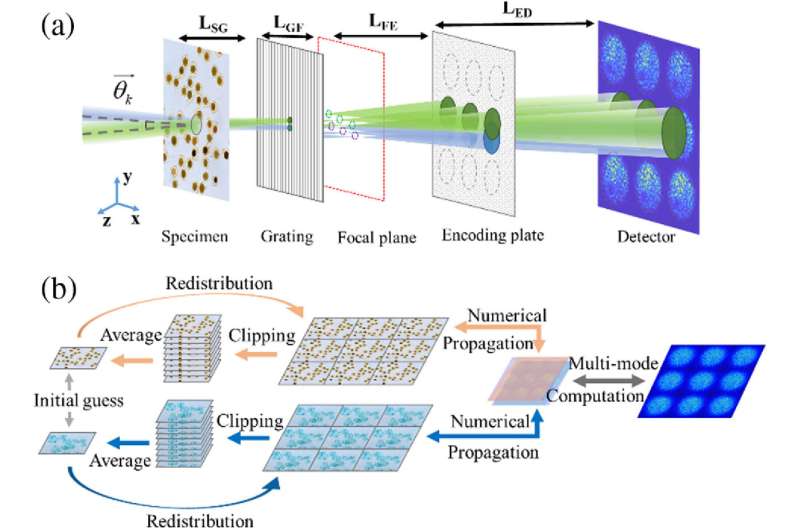Single-shot ultrafast multiplexed coherent diffraction imaging method

In a study published in Photonics Research, researchers from Shanghai Institute of Optics and Fine Mechanics (SIOM) of the Chinese Academy of Sciences (CAS) has proposed a new scheme for single-shot ultrafast multimodal coherent diffraction imaging that realizes ultrafast time-resolved real-time phase imaging.
The scheme is based on the principle of dynamic range multiplexing of detectors, which breaks through the technical difficulties of achieving high temporal resolution, spatial resolution and signal-to-noise ratio at the same time in single-shot ultrafast phase imaging. Moreover, by choosing the probe pulse width and adjusting the pulse sequence time delay, the method can achieve picosecond or even femtosecond temporal resolution and an ultra-wide imaging time range (on the order of femtoseconds to microseconds).
Ultrafast time-resolved real-time phase imaging has important applications in shock wave propagation, laser-induced damage, and exciton diffusion, especially for ultrafast transient phenomena that are not repeatable or difficult to generate.
In this study, the researchers proposed a single-shot ultrafast multiplexed coherent diffraction imaging (SUM-CDI) method. The single-shot ultrafast phase imaging was achieved by using the multiplexed phase retrieval algorithm and the beam-splitting encoding averaging technique, which can achieve high spatial and temporal resolution and signal-to-noise ratio.
Using this SUM-CDI technique, the physical process of UV laser-induced surface damage and internal filamentation of K9 glass was experimentally measured. The transient changes of internal filamentation, surface damage, shock wave and other processes were studied and the feasibility of this technique for nanosecond time-resolved phase imaging was verified. The spatial resolution reaches 6.96 μm. Compared with that of the single mode, the phase measurement error is less than 1%.
Therefore, this method has important application prospects in real-time ultrafast measurement, especially in the ultrafast field that requires phase measurement.
More information: Yingming Xu et al, Single-shot ultrafast multiplexed coherent diffraction imaging, Photonics Research (2022). DOI: 10.1364/PRJ.460948
Provided by Chinese Academy of Sciences





















